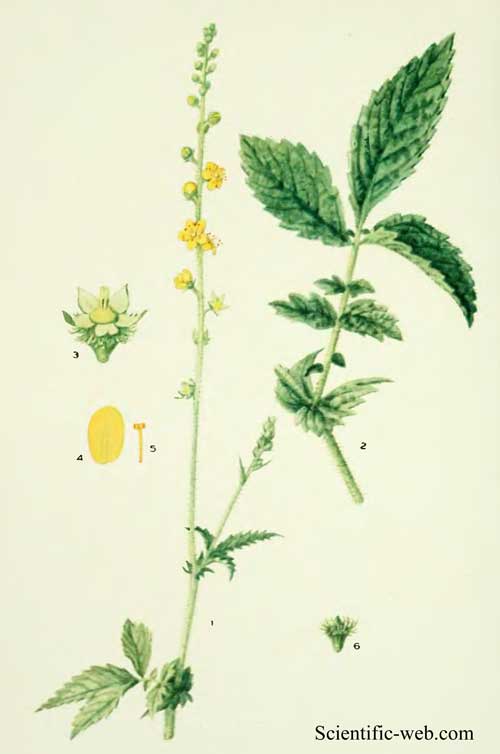
Agrimonia gryposepala
Classification System: APG IV
Superregnum: Eukaryota
Regnum: Plantae
Cladus: Angiosperms
Cladus: Eudicots
Cladus: Core eudicots
Cladus: Rosids
Cladus: Eurosids I
Ordo: Rosales
Familia: Rosaceae
Subfamilia: Rosoideae
Tribus: Agrimonieae
Subtribus: Agrimoniinae
Genus: Agrimonia
Species: Agrimonia gryposepala
Name
Agrimonia gryposepala Wallr., Beitr. Bot. 1: 49 (1842).
References
Links
Hassler, M. 2020. Agrimonia gryposepala. World Plants: Synonymic Checklists of the Vascular Plants of the World In: Roskovh, Y., Abucay, L., Orrell, T., Nicolson, D., Bailly, N., Kirk, P., Bourgoin, T., DeWalt, R.E., Decock, W., De Wever, A., Nieukerken, E. van, Zarucchi, J. & Penev, L., eds. 2020. Species 2000 & ITIS Catalogue of Life. Published online. Accessed: 2020 May 29. Reference page.
Govaerts, R. et al. 2020. Agrimonia gryposepala in Kew Science Plants of the World online. The Board of Trustees of the Royal Botanic Gardens, Kew. Published online. Accessed: 2020 May 29. Reference page.
International Plant Names Index. 2020. Agrimonia gryposepala. Published online. Accessed: 29 May 2020.
Agrimonia gryposepala (commonly known as tall hairy agrimony,[1] common agrimony,[2] hooked agrimony,[2] or tall hairy grooveburr[3]) is a small perennial flowering plant of the rose family (Rosaceae), which is native to North America. This plant was used by various indigenous peoples to treat medical problems such as diarrhea and fever.
Name and description
The plant grows 1–5 ft (about 30–150 cm) high, producing a cluster of small, yellow, 5-parted flowers on a hairy stalk above pinnate leaves. The fruits are hooked dry seeds grouped in a cluster. A spicy scent is released when the stem is crushed.[4][5] The plant's native range covers most of the United States and Canada (except the Rocky Mountains)[1] and extending south to Chiapas, Mexico.[2] It grows in woodlands and forests.[5]
The specific epithet, gryposepala, is derived from the Greek grypos, meaning curved or hooked,[6] and from sepala, meaning sepal.[5] The name "grooveburr," which is sometimes applied to the plant, comes from the grooved shape of the seedpod or burr.
Conservation status in the United States
It is listed as threatened in Kentucky.[7]
Uses
Across North America, various indigenous peoples used the plant for medicinal purposes. Among the Iroquois people, a drink made from the roots of the plant was used for diarrhea.[8] Among the Cherokee, the plant was used for the same purpose, to reduce fever, and for a range of other problems.[9] The Ojibwe used the plant for urinary problems,[9] and the Meskwaki and Prairie Potawatomi used it as a styptic for nosebleeds.[9]
These ethnobotanical uses of the plant have some similarities to the traditional medical uses of Agrimonia eupatoria, which is native to Europe, Asia, and Africa.
References
Plants Profile for Agrimonia gyrosepala Retrieved 2010-03-13.
"Agrimonia gryposepala". Germplasm Resources Information Network (GRIN). Agricultural Research Service (ARS), United States Department of Agriculture (USDA). Retrieved 2010-03-13.
ITIS Standard Report Page: Agrimonia gryposepala Retrieved 2010-03-13.
Lady Bird Johnson Wildflower Center Retrieved 2010-03-13.
Robert W. Freckmann Herbarium University of Wisconsin - Stevens Point Archived 2011-09-28 at the Wayback Machine Retrieved 2010-03-13.
Henry Liddell and Robert Scott, A Greek-English Lexicon, online at the Perseus Project.
"Plants Profile for Agrimonia gryposepala (tall hairy agrimony )". plants.usda.gov. Retrieved 22 January 2018.
James W. Herrick and Dean R. Snow (1997). Iroquois Medical Botany. Syracuse University Press. p. 161. ISBN 0-8156-0464-5.
Daniel E. Moerman (2009). Native American Medicinal Plants: An Ethnobotanical Dictionary. Timber Press. pp. 52–53. ISBN 978-0-88192-987-4.
Retrieved from "http://en.wikipedia.org/"
All text is available under the terms of the GNU Free Documentation License

